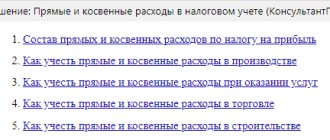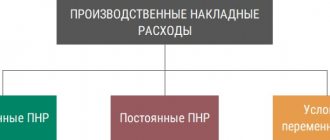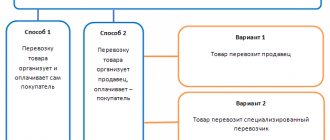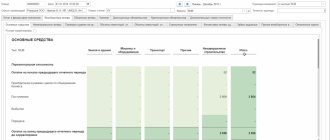Basic requirements for organizing accounting in 2014
Today we can highlight the following aspects of accounting under the simplified tax system:
- enterprises have the right to independently decide how to maintain accounting records, however, they should be guided by the requirements of the Federal Law of December 6, 2011 No. 402-FZ;
- an enterprise using the simplified tax system has the right to use a simplified form of preparing primary documentation and maintaining a Book of Income and Costs;
- simplifiers, according to Art. 346.24 of the Tax Code of the Russian Federation, in order to determine the tax base, they are required to keep records of profits and expenses in the Book of Income and Expenses;
- the procedure for reflecting all business transactions carried out in the Book of Income and Expenses, as well as its form, is established by the Ministry of Finance of the Russian State;
- Taxpayers who use the simplified tax system, but for certain types of activities were transferred to UTII, must keep separate records of profits and costs under these regimes. If division is not possible, then they should be distributed in proportion to the share of income in the total revenue (clause 8 of Article 346.18 of the Tax Code of the Russian Federation);
- The procedure for conducting cash transactions and submitting mandatory reporting remains valid for simplified enterprises.
The head of the organization is responsible for the accuracy of financial statements, as well as for the organization and maintenance of accounting at the enterprise.
Results
We recommend keeping records of expenses under the simplified tax system “Income”, regardless of their reflection in KUDiR, since:
- some business transactions require restrictions on the use of the simplified tax system;
- tax authorities and law enforcement agencies may request documentation confirming the company’s expenses for the purchase of inventory and materials;
- Legal entities are responsible for accounting.
The use of the simplified tax system of 6% significantly simplifies the document flow at the enterprise, and the ability to reduce the tax on social payments allows you to save up to 50% of its amount.
You can find more complete information on the topic in ConsultantPlus. Free trial access to the system for 2 days.
Maintaining the Book of Income and Expenses under the simplified tax system
Businesses are required to record their income and expenses. Registration is carried out in the Book of Income and Expenses on the basis of primary documentation in compliance with chronological sequence. The rules for filling out this Book differ depending on which tax rate the taxpayer has chosen. So, in the simplified “income” mode, the filling procedure will be as follows:
- Section 1 reflects income. If you receive budget funds for the creation of new jobs or business development, you should display the costs associated with the use of these funds;
- in section 4 you should indicate the amount of compulsory insurance premiums paid, as well as hospital benefits that were issued at the expense of the enterprise. Note that hospital benefits that were paid at the expense of the Social Insurance Fund are not indicated in the fourth section.
In the simplified “income minus expenses” mode, the procedure for filling out the Book is slightly different:
- Section 1 reflects income and expenses affecting the tax base;
- the second section is filled out if the organization has its own fixed assets or intangible assets;
- Section 3 indicates losses from previous years.
At the end of the year, the Income and Expense Accounting Book should be stitched, numbered and stamped by the organization, as well as the signature of the manager on the last sheet.
There have also been some pleasant changes in the rules for filling out this Book. For example, it no longer needs to be certified by the tax office. Also, since 2013, the Book does not reflect exchange rate differences, that is, property and liabilities, the value of which is expressed in foreign currency, are no longer revalued (clause 5 of Article 346.17 of the Tax Code of the Russian Federation).
Nuances that require attention
Let's consider the main nuances for each of the above situations:
- All contributions paid and sick leave benefits issued must be recorded in the fourth section of the ledger. And the amounts deducted must be reflected in the accounting book. certificate
- Accrued contributions must be paid to the appropriate funds by the fifteenth day of the next month. Personal income tax and vacation pay and salary are paid only after the money has been issued to the employees.
From the documentation of the reporting employee it should be clear what he purchased, at what price and in what quantity. If the documentation is completed incorrectly, inspectors may charge contributions and personal income tax on accountable funds.
Accounting for fixed assets and intangible assets under the simplified tax system
Accounting for intangible assets and fixed assets is mandatory for all LLCs applying the simplified regime. Expenses for the acquisition of fixed assets are taken into account depending on the time of their purchase. At the time of commissioning of fixed assets, you can take into account the costs of their acquisition as expenses, if they were purchased during the period of application of the simplification.
If the acquisition of fixed assets occurred during a period when the company had not yet applied the simplified tax system, then the costs of their acquisition are written off according to the scheme below:
- fixed assets with a useful life of up to three years - for one year of use of the simplified tax system;
- if the useful life is from 3 to 15 years - 50 percent during the first year, 30% during the second and 20% during the third;
- if the useful life is fifteen years or more - in equal shares over 10 years.
When transferring or resale of intangible assets and fixed assets before the end of their useful life, the taxpayer needs to recalculate the tax base for the entire period of operation of these objects from the moment of acquisition to the moment of sale and transfer the additional accrued amount of tax and penalty to the state budget.
VAT under a simplified taxation system. Accounting for input VAT
When applying the simplified tax system, clause 2 of art. 346.11 of the Tax Code of the Russian Federation provides for the replacement of VAT payment with the payment of a single tax. The exception is VAT, which is payable when importing products and goods into the customs territory of Russia. Of course, an enterprise that is under a simplified regime can, at the client’s request, issue invoices with the VAT amount allocated in them, although this will create significant problems for both parties.
Firstly, the counterparty will not be able to claim a deduction under such a document.
Secondly, according to clause 5 of Article 173 of the Tax Code of the Russian Federation, the simplifier will be obliged to pay the amount of tax invoiced to the budget. At the same time, the VAT charged to the buyer increases the company’s income, but it cannot be written off as an expense. Thirdly, the simplifier will have to submit a value added tax return to the controlling tax authority. From 01.01.14, the VAT return must be submitted only in electronic form, in accordance with paragraph 1, clause 5 of Art. 174 Tax Code of the Russian Federation. [goo_mid] Organizations that use the simplified tax system “income minus expenses” can include input VAT on purchased products, works and services in the calculation of the tax base. At the same time, in the tax base, VAT is reflected in the cost of intangible assets and fixed assets acquired by the enterprise, or under a certain item of expenses when purchasing products (works or services), and other tangible assets.
Input VAT is written off on expenses on the date of recognition of expenses for the acquisition of property.
If value added tax was paid on goods that are intended for subsequent resale, then the write-off occurs as they are sold.
The volumes of input VAT that were taken into account under a separate expense item are displayed in costs if the tax was fully paid to the supplier, and the cost of purchased goods (work or services), to which this amount of VAT relates, was written off as costs.
Expenses that reduce the amount of tax under the simplified tax system 6%
You can reduce the tax on simplified taxation system income due to the expenses specified in Art. 346.21 Tax Code of the Russian Federation. These include, in particular:
- Expenses for paying social contributions for hired employees.
- Expenses for the payment of benefits for temporary disability, paid at the expense of the employer, but not covered by insurance payments under policies concluded with the employer for this case.
- Payments under temporary disability insurance contracts (except for accidents) for employees, if the amount of payments expected in the event of an insured event does not exceed the amount of benefits calculated in accordance with the legislation on the relevant type of insurance.
- Expenses for medical and pension insurance paid by the entrepreneur for himself (if the individual entrepreneur does not have employees).
- Expenses for paying the trade fee established in the territory of the activity, if the notification of registration for a specific trade object was submitted in accordance with the law.
Due to these expenses, both advances under the simplified tax system and simplified annual tax can be reduced by a maximum of 50%. Such costs are reflected in sections 2.1.1 (pages 140–143 for insurance premiums) and 2.1.2 (pages 160–163 for trade taxes) of the declaration under the simplified tax system, approved by order of the Federal Tax Service of Russia dated February 26, 2016 No. ММВ-7-3/ [email protected] , in the corresponding reporting period according to the date of their transfer.
Find out more about the simplified tax system “income” in this article.
Chart of accounts under the simplified tax system
To maintain accounting records, an organization using a simplified taxation system can reduce the number of synthetic accounts and use:
- for maintaining records of inventories, account 10 “Materials”;
- to display production and commercial costs - account 20 “Main production”, as well as account 44 “Sales expenses”;
- to account for finished products (goods) – account 41 “Goods”;
- to summarize information on receivables and payables - account 76 “Settlements with various debtors and creditors”;
- in order to keep records of funds in bank accounts - accounting account 51 “Current accounts”;
- to reflect capital – account 80 “Registered capital”;
- for keeping records of financial results – account 99 “Profits and losses”.
Reporting for enterprises using the simplified tax system in 2014
Organizations that apply the simplified taxation system must submit the following reports:
- Taxpayers using the simplified tax system are required to submit only annual reports to the tax authority at the place of registration. The deadline for its submission is no later than three months after the end of the reporting year. So, before March 31, a tax return (including a zero one) is submitted, as well as accompanying documentation on paper or electronic media in the prescribed form. From January 1, 2014, when filling out a declaration under the simplified tax system, according to the letter of the Federal Tax Service of the Russian Federation dated October 17, 2013 No. ED-4-3/18585, it is recommended to indicate the OKTMO code in the “OKATO code” field. In addition, the enterprise must submit reports in Form 2-NDFL by April 1, and data on the average number of employees by January 20;
- individual personalized information is submitted to the Pension Fund, as well as a report in form RSV-1 (quarterly);
- to the Social Insurance Fund - reporting in Form No. 4-FSS (quarterly);
- Form No. PM “Information on the main performance indicators of a small enterprise” is submitted quarterly to the statistical authorities, as well as annual reporting, which includes a balance sheet for the year, a report on financial results and appendices. In the event that there was no activity at the enterprise, zero reporting is submitted.
Today, in accordance with the Tax Code of the Russian Federation, individual entrepreneurs using the simplified tax system submit a declaration to the tax authority only once a year, regardless of the object of taxation they have chosen. If an individual entrepreneur has hired employees on his staff, he is also required to submit Form 2-NDFL.
Conditions for applying the simplified tax system
The simplified taxation system has a number of limitations:
- the number of employees of the organization should not exceed 130 people;
- the residual value of fixed assets of the LLC must be within RUB 150,000,000;
- the amount of income for the previous tax year should not exceed 200,000,000 rubles. (for organizations working on the simplified tax system) and income for 9 months of the previous year should be within 112,500,000 rubles. for LLCs that plan to switch to the simplified tax system;
- the share of participation in the LLC of other legal entities cannot exceed 25%;
- the company should not have branches;
- The organization cannot engage in any of those listed in paragraph 3 of Art. 346.12 Tax Code of the Russian Federation types of activities.
The application of the simplified tax system is permitted from the date of registration of the LLC in the current year. To do this, you need to submit an application to the tax office within 30 calendar days from the date of tax registration. Go to the “simplified” legal form. a person can only from the beginning of the next calendar year. In this case, you can submit an application for transfer until December 31 inclusive.
If the deadline for submitting an application is violated, the newly registered company will keep accounts and report to the Federal Tax Service on the OSN, and the existing organization will remain on the current taxation system (subclause 19, clause 3, article 346.12 of the Tax Code of the Russian Federation). Organizations will be able to switch to the simplified tax system starting next year if they do not exceed the restrictions established by law.
Zero reporting under simplified mode
If for some reason the enterprise did not carry out (or did not have time to begin after registration) economic activity, zero reporting must be submitted to the regulatory authority. For enterprises using the simplified tax system, such reporting is a zero declaration for the single tax. It should indicate the object of taxation, as well as information about the LLC or individual entrepreneur.
This document is submitted once a year, according to the deadlines approved by law. If an enterprise has decided to end its activities, then zero tax reporting is provided for less than a full year.
Zero reporting is also submitted when there are no employees in the organization. In such a situation, reports with dashes are submitted to the tax office in form 2-NDFL, and to the Pension Fund and Social Security - in forms RSF-1 and FSS-4.





